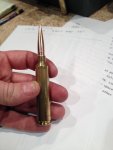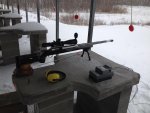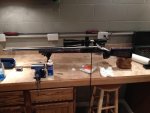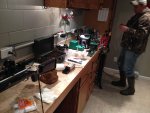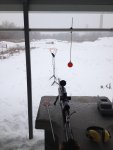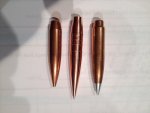Bohem,
" 'I was really not planning for the lube to become a primary focus this early.
But Noel, you wrote the magic phrase
'extended barrel life...'
Forum-wars are won and lost over this argument alone!"...
What the grease giveth, it taketh away. I expect the gains realized at lower pressures (40-50 kpsi) will break-even at the operating ranges enabled with HP steel cases.
Greg,
"Reading this, I see potential for the chamberings I shoot that are borderline near-overbore, like the .260, .280, and .30-'06; but I'm not so clear about whether this substance would be contraindicated for gas guns."...
At the gas port, concentrations of lube would be relatively small. To the extent it entered the actuating cylinder, lubricating properties should still exist, and there would certainly be less build-up than that deposited by propellant residue.


